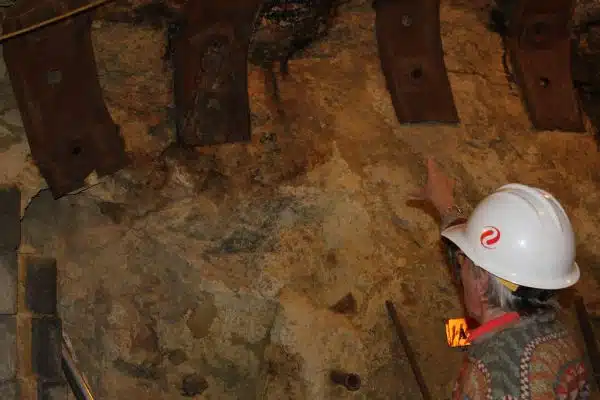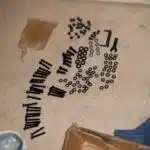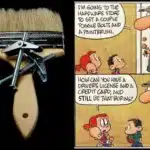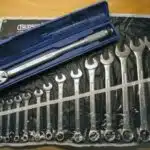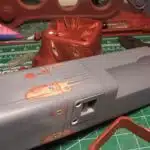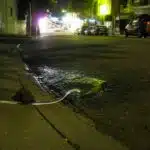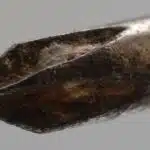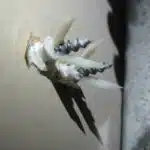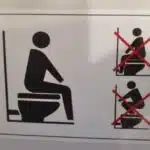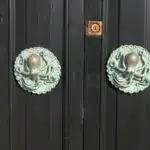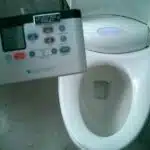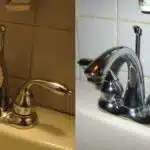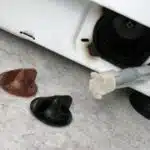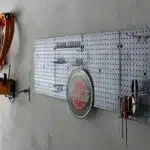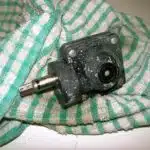As an automotive mechanic or technician, removing stripped bolts is a common challenge that arises during vehicle maintenance and repair. Stripped bolts occur when the threads on the bolt are damaged or worn down, making it difficult to remove with traditional tools such as wrenches or pliers. This can be a frustrating issue for many mechanics, but fortunately there are several techniques that can be used to successfully remove stripped bolts.
In this article, we will explore some effective methods for removing stripped bolts from vehicles. Whether you’re a seasoned mechanic or just starting out in the field, these techniques will help you tackle this common problem with confidence and ease. By following these steps, you’ll be able to quickly and safely remove stripped bolts from your vehicle without causing further damage, allowing you to get back on the road in no time. So grab your tools and let’s get started!
Identifying A Stripped Bolt
As an automotive mechanic, identifying stripped bolts is crucial in performing maintenance and repair work for vehicles. Signs of a stripped bolt include the inability to turn the bolt using a wrench or socket, as well as visible damage to the hexagonal head of the bolt. The bolt may also be stuck in place due to corrosion or rust.
Common causes of stripped bolts include over-tightening, which can cause the threads to become damaged, and using incorrect tools such as worn-out sockets or wrenches that do not fit correctly. Another cause is corrosion due to exposure to moisture or harsh chemicals over time, which weakens the metal and makes it prone to stripping.
Assessing the level of damage is important before attempting to remove a stripped bolt. This includes checking if only the head of the bolt is damaged or if the threads are also affected. It’s also essential to determine whether any other parts have been damaged due to the stripped bolt. By properly identifying and assessing damaged bolts, mechanics can take necessary steps towards effective repairs and maintenance.
Assessing The Level Of Damage
After realizing that you have a stripped bolt, the first thing to do is to assess the severity of the damage. This will determine the appropriate approach to use when trying to remove it. One way to do this is by looking at how much of the bolt head is left. If there is enough space for a wrench or pliers to grip onto, then it may be possible to remove it without too much difficulty. However, if there is barely any space left or none at all, then the situation becomes more complicated.
Another factor that affects the severity of damage is whether or not the bolt was over-tightened during installation. Over-tightening can cause bolts and nuts to become damaged or warped, which in turn makes them harder to remove. Common causes of over-tightening include using too much force, not using a torque wrench, and failing to lubricate threads before installation.
In addition to assessing severity and common causes of stripped bolts, it’s also important to take note of any surrounding components that could be impacted during removal attempts. Parts such as gaskets and seals can be easily damaged if care isn’t taken when removing a bolt. It’s always best practice to carefully examine surrounding areas before attempting any repairs.
- Look at how much of the bolt head is left.
- Check if over-tightening occurred during installation.
- Consider surrounding components that could be impacted during removal attempts.
Moving on from assessing severity and common causes of stripped bolts, the next step is learning how to use pliers or vice grips for removal purposes.
Using Pliers Or Vice Grips
When it comes to removing stripped bolts, pliers or vice grips can be a handy tool for the job. There are different types of pliers that you can use, depending on the size and shape of the bolt. For instance, needle-nose pliers work best for small bolts or screws, while locking pliers come in handy for bigger bolts that are hard to grip.
To get a proper grip on the bolt, it’s important to use the right technique when using pliers or vice grips. First, make sure that you have a good grip on the tool by holding it firmly with your hand. Then, position the jaws of the pliers or vice grips over the stripped bolt and apply pressure by squeezing them together. Twist the tool in a counterclockwise direction to loosen the bolt until it comes off.
Before we go into detail about applying heat to a stripped bolt, let’s take a look at some common causes of stripped bolts and how to prevent them from happening in the first place. One common cause is overtightening of bolts during installation or repair work. To avoid this, make sure that you use a torque wrench and follow manufacturer’s recommendations when tightening bolts. Another cause is using worn or damaged tools when working on bolts. Always check your tools before starting any job and replace them if necessary. Finally, rust and corrosion can also lead to stripped bolts. Applying lubricant before attempting to remove stubborn bolts can help prevent stripping.
Transition: Now that we have covered how to use pliers or vice grips properly and how to prevent stripped bolts from occurring, let’s move onto another method of removing stubborn bolts – applying heat.
Applying Heat To The Bolt
The use of heat as a method of removing a stripped bolt is a common practice in automotive mechanics. Heat sources can range from a blow torch, to a heat gun, to a soldering iron. The temperature of the heat source should be between 400-550°F in order to effectively loosen the bolt without causing any damage to the surrounding parts. It is recommended to use a lower temperature when removing soft metal bolts, such as aluminum, and a higher temperature when removing harder metals, such as steel.
Heat Sources
When dealing with a stripped bolt, applying heat can help to loosen it up and make it easier to remove. There are a few different heat sources that mechanics and technicians commonly use for this purpose. One option is to use torches, which can provide intense heat and quickly break down any rust or other debris that may be holding the bolt in place.
Another option for applying heat to a stripped bolt is to use chemical heat sources. These are typically available in the form of sprays or liquids that can be applied directly to the bolt. The chemicals work by breaking down any corrosion or other buildup that may be preventing the bolt from turning. While not as powerful as torches, chemical heat sources can still be effective in many cases.
When working with any kind of heat source, it’s important to take proper safety precautions. This includes wearing protective gear like gloves and goggles, ensuring good ventilation in the workspace, and using tools correctly and carefully. By following these guidelines and choosing the right kind of heat source for the job at hand, mechanics and technicians can successfully remove even the most stubborn stripped bolts without causing damage to surrounding components or risking injury.
Temperature Range
When it comes to removing stripped bolts, using different heating methods is one of the most effective ways to loosen them up. However, it’s important to be mindful of the temperature range when applying heat to avoid causing further damage or complications. As an automotive mechanic or technician, understanding the appropriate temperature range can make a significant difference in the success of removing stripped bolts.
One common mistake to avoid when removing stripped bolts is overheating them with torches or other heat sources. This can cause surrounding components to become damaged or even melt if they’re made of plastic or rubber. Additionally, overheating can cause the bolt itself to become warped or weakened, making it more difficult to remove. Therefore, it’s essential to use heat sources that provide enough heat without going beyond the recommended temperature range.
The ideal temperature range for applying heat depends on several factors such as the type of metal used for the bolt and its size. Generally speaking, temperatures between 300-500 degrees Fahrenheit are sufficient for most applications. However, some specialized cases may require higher temperatures. It’s crucial for mechanics and technicians not only to know what temperature range is appropriate but also how long they should apply heat for before attempting removal. By taking these considerations into account, professionals can safely and effectively remove stripped bolts without causing unnecessary damage or harm.
Trying An Impact Wrench
As we delve deeper into the process of removing stripped bolts, it’s important to understand that sometimes an impact wrench simply won’t cut it. In such cases, it’s important to explore alternative methods that can help you move forward. With that said, let’s take a closer look at some impact wrench alternatives and common causes of stripped bolts.
When an impact wrench isn’t enough to remove a stripped bolt, one thing you can try is using a breaker bar. This tool provides more leverage than an impact wrench, which can make all the difference when dealing with stubborn bolts. Another option is using a pipe wrench, which allows you to grip the bolt tightly and apply force in a controlled manner. However, be careful not to damage the surrounding components when using this tool.
Common causes of stripped bolts include using the wrong size or type of wrench, overtightening the bolt, corrosion or rust buildup, and poor quality bolts or tools. If you’re experiencing issues with stripped bolts on a regular basis, it may be worthwhile to evaluate your tools and techniques to identify areas for improvement. By taking proactive steps now, you can save yourself time and frustration in the long run.
With these impact wrench alternatives and common causes of stripped bolts in mind, it’s clear that there are many factors at play when it comes to removing stubborn fasteners. Next up, we’ll take a closer look at utilizing a bolt extractor set as yet another option for freeing those stuck bolts once and for all.
Utilizing A Bolt Extractor Set
When it comes to removing a stripped bolt, utilizing a bolt extractor set is another alternative that is worth considering. This set enables users to remove damaged bolts or screws easily without causing damage to the surrounding surfaces. Bolt extractors come in various sizes and shapes, which makes them ideal for different kinds of bolts.
One mistake most people make when using a bolt extractor set is not selecting the right size. It is essential to choose an extractor that matches your bolt’s size; otherwise, it may break or fail to grip the bolt properly. Another common mistake is not drilling deep enough into the bolt before using the extractor. This can lead to poor results and even cause further damage to the threads.
If you’re looking for alternatives other than using a bolt extractor set, try heating up the surrounding area with a blowtorch or applying penetrating oil around the stripped bolt. These solutions may help loosen up rust or corrosion between the threads, making it easier to remove the bolt. However, it’s important to note that these alternatives are not always effective and may require additional steps.
Transition: While using a bolt extractor set has proven effective in removing stripped bolts, sometimes tapping on the affected area with a hammer can also help loosen up rust or corrosion between threads. Let’s take a closer look at this next step.
Tapping The Bolt With A Hammer
Utilizing a Bolt Extractor Set is not always the solution for removing stripped bolts. There are instances where the extractor set fails to work due to the severity of the situation. In such cases, Tapping the Bolt with a Hammer can come in handy.
Tapping bolt with a hammer helps break rust and corrosion that may be holding the bolt. The impact of hammer on bolt creates vibrations that help loosen it. However, one needs to exercise caution when using this method as excessive force can cause damage to surrounding components.
There are different hammer techniques for stripped bolt removal. A common one is tapping bolt with a hammer lightly, then gradually increasing force until it loosens up. Another technique is striking the bolt head directly with a hammer in an attempt to dislodge it from its place. Hammering stripped bolt requires skill and patience to avoid damaging other components or causing injury. By applying various hammering tips for stripped bolt removal, one can effectively remove it without causing any harm or damage.
Applying lubricant or penetrating oil is another effective way of removing stubborn bolts, and we will discuss this method in detail in our subsequent section.
Applying Lubricant Or Penetrating Oil
As an automotive mechanic or technician, one of the best ways to remove a stripped bolt is by using lubricant or penetrating oil. However, it’s essential to use the right lubricant to avoid making the situation worse. Using a liquid wrench or WD-40 is not enough – you need to use a specialized product that can penetrate and loosen rusted bolts.
When applying lubricant or penetrating oil, avoiding common mistakes is crucial. One of these mistakes is not giving enough time for the product to work before attempting to remove the bolt. Rushing this process can result in further damage to the bolt, making it even harder to remove. It’s important to follow the manufacturer’s instructions and let the product sit for at least ten minutes.
Another mistake people make when applying lubricant is not using enough of it. This can result in an insufficient amount of lubrication getting into the threads, which makes it difficult for you to loosen the bolt. Using too little also means that you will have to apply more force than necessary, increasing your chances of damaging either the tool or equipment you’re working on.
Using a left-handed drill bit is another method for removing stripped bolts. However, it’s essential first to try using penetrants and lubricants as they are less invasive methods that may work without causing any additional damage. If these methods do not work, then using a left-handed drill bit may be your next option.
Using A Left-Handed Drill Bit
After applying lubricant or penetrating oil to the stripped bolt, if it still does not budge, there are other methods available to remove it. One of the most effective techniques is using a left-handed drill bit. Left-handed drill bits have a reverse threading and are designed to turn counterclockwise, which can help loosen and extract the bolt.
There are several benefits of using left-handed drill bits. Firstly, they can be used on a range of materials such as metal, wood, and plastic. Secondly, they can be easily operated using a standard drill machine. Lastly, they provide an efficient way to remove bolts without damaging the surrounding material.
It is important to note that left-handed drill bits come in different sizes ranging from 1/16 inch to 1/2 inch diameter. Therefore, it is crucial to select the appropriate size depending on the size of the bolt. Using a larger sized drill bit may result in damage to the surrounding material while using a smaller sized one may not effectively remove the bolt.
Transitioning into welding a nut onto the bolt: If removing the stripped bolt with a left-handed drill bit proves unsuccessful or if there is no access for drilling due to its location, another method can be welding a nut onto the bolt. This involves heating up a nut until it becomes red-hot and then placing it over the stripped bolt head. Once cooled down, use pliers or wrenches to turn and extract the bolt from its position.
Welding A Nut Onto The Bolt
When dealing with a stripped bolt, you may find that welding a nut onto the bolt is an effective solution. This method involves using a welder to attach a nut to the top of the stripped bolt, allowing you to easily remove it with a wrench. Before attempting this technique, it is important to take proper safety precautions and ensure your welding equipment is well-maintained.
To begin, make sure you have all necessary welding safety equipment on hand, including gloves, goggles, and protective clothing. Next, check that your welding equipment is in good working order and properly maintained. Any issues with your equipment could lead to dangerous situations during the welding process.
Once you have taken all necessary safety measures and ensured your equipment is functioning properly, follow these steps to weld a nut onto the stripped bolt:
| Column 1 | Column 2 | Column 3 | Column 4 | Column 5 |
|---|---|---|---|---|
| Step 1 | Clean the area around the stripped bolt thoroughly | |||
| Step 2 | Place the nut onto the stripped bolt | |||
| Step 3 | Use your welder to attach the nut to the top of the bolt | |||
| Step 4 | Allow time for everything to cool down before attempting to remove the bolt | |||
| Step 5 | Use a wrench to turn the newly attached nut counterclockwise and remove both pieces together |
By following these steps carefully and taking proper safety precautions throughout the process, you can successfully weld a nut onto a stripped bolt. Once this step is completed, you can move on to tapping with a chisel if necessary.
Tapping The Bolt With A Chisel
After welding a nut onto the stripped bolt, you may still find that it won’t budge. In this scenario, using a chisel for removing bolts is another option to try. It involves tapping the bolt with a chisel to loosen it from its position.
Before using a chisel, make sure that you take safety precautions. Wear protective goggles and gloves to avoid any accidents while working on the bolt. Also, ensure that you have a firm grip on the chisel before tapping it with a hammer.
To use a chisel for removing bolts effectively, place the blade of the chisel on one side of the bolt head and tap it gently with a hammer. Repeat this step on all sides of the bolt head until it loosens up enough for you to remove it with pliers or vice grips. Remember that patience is key when using this method as excessive force can damage both the bolt and surrounding components.
Using a dremel or rotary tool can also be an effective way of removing stripped bolts. However, this method requires more precision and should only be attempted by experienced mechanics or technicians. In case you are not confident in your abilities or lack proper equipment, seek professional help instead of risking further damage to your vehicle’s components.
Using A Dremel Or Rotary Tool
They say that “a Dremel tool is a mechanic’s best friend.” And they’re not wrong. A rotary tool, like a Dremel, is an incredibly versatile and useful tool in any mechanic’s toolbox. It can be used for everything from cutting and grinding to sanding and polishing. When it comes to removing a stripped bolt, using a Dremel or rotary tool can make the job much easier.
However, before you start using your Dremel, there are some important safety precautions that you need to take. Make sure you wear eye protection and a dust mask to protect yourself from flying debris. Also, be sure to keep your fingers and other body parts away from the spinning bit of the tool. Finally, be aware of the heat generated by the tool, as it can easily burn your skin if it comes into contact with it.
Once you’ve taken all of the necessary safety precautions, it’s time to start using your Dremel. Begin by selecting a small cutting wheel or grinding bit that is appropriate for the size of the stripped bolt. Carefully grind away at the sides of the bolt until there is enough space between it and whatever surface it’s attached to so that you can remove it with pliers or vice grips. With careful application of pressure on those tools with pliers or vice grips will help loosen up even more.
The next section will discuss applying pressure with a jack to remove stubborn bolts without damaging surrounding components or parts that are near them.
Applying Pressure With A Jack
Using a jack to apply pressure is an effective way to remove a stripped bolt. However, it’s important to do so carefully to prevent damage to the surrounding areas. First, place the jack under the area where the bolt is located and slowly apply pressure until you feel resistance.
Make sure that the jack is positioned securely and evenly under the car, with no wobbling or slipping. Then, slowly turn the wrench counterclockwise to loosen the bolt. If you encounter any resistance or difficulty, stop immediately and reposition the jack or seek professional assistance.
Preventing damage during this process is crucial. Avoid using excessive force or pressure, as this can cause irreparable harm to other parts of the vehicle. If you’re unsure of how much pressure to apply, consult a mechanic or technician for guidance before attempting this on your own.
Seeking Professional Assistance
If you have tried all the DIY tips to remove a stripped bolt, but still couldn’t get it out, it’s time to seek professional assistance. It’s understandable if you want to save some money by trying to fix the issue yourself, but sometimes it can be more costly in the long run if you make things worse. A professional mechanic or technician has the proper tools and expertise needed to remove a stripped bolt without causing further damage.
When seeking professional assistance, look for a reputable automotive shop with certified technicians. You want to be sure that the person working on your vehicle has the necessary training and experience to handle the job efficiently and effectively. Do some research online or ask for recommendations from friends and family members who have had similar issues with their vehicles.
Remember that prevention is key when it comes to stripped bolts. In the next section, we will discuss some tips on preventing future stripped bolts and what steps you can take to avoid this frustrating problem in the future.
Preventing Future Stripped Bolts
Preventive measures are always better than waiting for the problem to happen. In the case of stripped bolts, there are several steps that you can take to prevent them from happening in the future. Firstly, make sure that you use the right tools when working on bolts. Using inappropriate or damaged tools can cause damage to the bolt or nut, which can lead to stripping. Secondly, ensure that you lubricate your bolts and nuts before screwing them on tightly. This will help reduce friction and prevent binding.
Common causes of stripped bolts include over-tightening, using incorrect tool sizes, poor quality threads on nuts or bolts, and corrosion. Over-tightening is a common issue, especially if you do not have a torque wrench to measure the tightening force accurately. Hand tightening may seem like a good idea; however, it can result in over-tightening as people tend to apply greater strength than necessary. Additionally, incorrect tool size usage will cause slippage and rounding off of edges on both nuts and bolts.
In conclusion, preventing stripped bolts is possible by taking preventive measures such as using appropriate tools for the job and lubricating all parts before screwing them tight. Common causes of stripped bolts include over-tightening, using incorrect tool sizes, poor quality threads on nuts or bolts and corrosion. By taking these steps into consideration when working with bolts in your automotive projects you can avoid complications like having to remove a stripped bolt.
Conclusion
Identifying a stripped bolt is crucial. It can happen due to a number of reasons like over-tightening, corrosion or using the wrong tool. Assessing the level of damage will help determine which tool to use for removal. Pliers or vice grips can be used for small stripped bolts while an impact wrench may be needed for larger ones. Applying heat to the bolt can also work.
A Dremel or rotary tool can be used to cut a slot in the bolt head for better grip, while applying pressure with a jack can add leverage. However, if none of these methods work, seeking professional assistance is advised. As mechanics and technicians, it’s important to prevent future stripped bolts by using correct tools and techniques during installation.
In conclusion, removing a stripped bolt requires patience and the right tools. As automotive professionals, we must take preventive measures to avoid such situations from happening in the future. Remember, “an ounce of prevention is worth a pound of cure.”
Image Credits
- “bacon strips and rock bolts” by Michelllaurence (featured)

